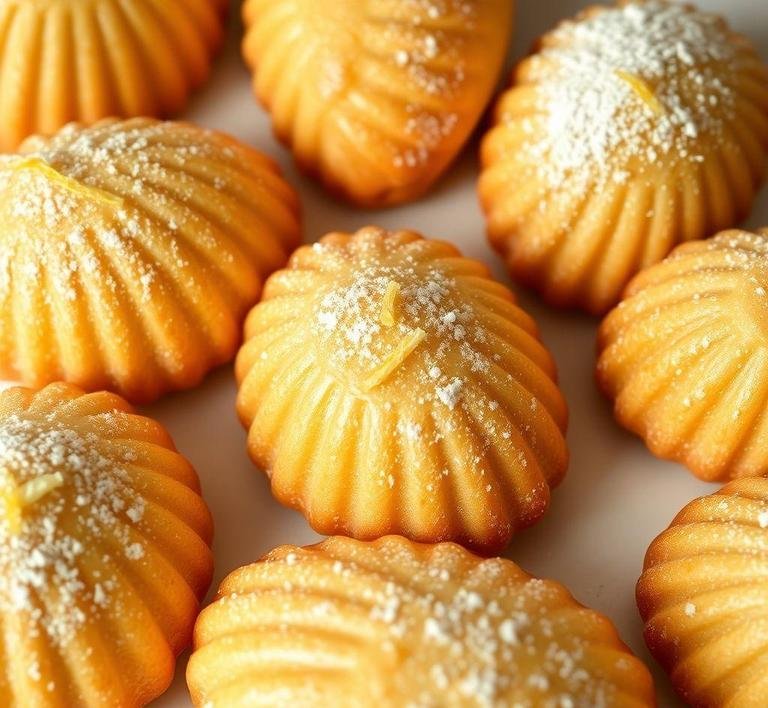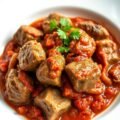The first time I stumbled across Nigella Lawson’s madeleine recipe, I was elbow-deep in a moment of deep nostalgia, probably too many cups of tea into a gloomy Sunday. The kind where you find yourself meandering through cookbooks not looking for dinner but a feeling. And then there they were-madeleines. Those little shell-shaped cakes that seem too elegant to be so simple. They’ve always felt to me like the kind of thing you’d eat in a quiet Parisian café while reading a tattered copy of Swann’s Way, which, let’s be honest, you picked up mostly because of that one madeleine passage everyone references but nobody actually remembers.
Nigella’s take on madeleines is, in her own words, more about charm than pomp. They’re golden, citrusy, pillowy bites that bridge cake and cookie and they’re surprisingly quick to throw together. What drew me in wasn’t just the recipe. it was how unapologetically sensory she made it sound. You don’t just make these. You create a moment around them. You pause. You notice. And that, to me, is what baking should be about.
Nigella Madeleine Recipe
Ingredients Needed

This is where the magic begins. Madeleines don’t call for exotic ingredients. no trips to niche patisseries required. And that’s the beauty. The simplicity makes space for care.
Here’s what you’ll need for Nigella’s version (with a few of my notes):
- 2 large eggs (at room temperature. trust me, don’t skip this)
- 100g caster sugar (about ½ cup)
- 100g plain flour (all-purpose), sifted
- 1 tsp baking powder
- 100g unsalted butter, melted and cooled (plus a bit extra for greasing)
- Finely grated zest of 1 lemon (or sometimes I sneak in orange zest if I’m feeling rebellious)
- 1 tsp vanilla extract (not essence, the real stuff)
- Optional: icing sugar for dusting
That’s it. No fuss. No drama. Just ingredients that feel like old friends in your pantry.
Equipment Needed
There’s really only one non-negotiable item here-and it’s worth it.
- Madeleine pan – That signature scalloped shape doesn’t make itself. I hunted mine down in a tiny kitchen store and have used it for everything from madeleines to oddly-shaped muffins.
- Mixing bowls – One for the eggs and sugar, one for dry ingredients.
- Whisk or electric hand mixer. I usually start with a hand whisk because it makes me feel more connected to the process but when the arm gets tired, the mixer steps in like a reliable backup singer.
- Microplane grater – For zesting the lemon into ethereal wisps.
- Rubber spatula – For that satisfying scrape of batter from bowl to pan.
- Cooling rack – Because warm madeleines are divine but room-temp ones dusted with sugar? Heaven.
Instructions To Make Nigella Lawson’s Madeleine
Now we get to the part that feels like a ritual. Here’s how I do it, slowly, lovingly, sometimes with a bit of jazz in the background.
- Melt the butter first, then set it aside to cool. I do this before anything else because if it’s too hot, it’ll mess with your batter. Think of it like letting someone calm down before you ask them a favor.
- Whisk the eggs and sugar until thick and pale. This takes about 5 minutes with a mixer, longer by hand. I always think of this as the part where the batter catches its breath and swells with potential.
- Sift the flour and baking powder together, then gently fold it into the egg mixture. Don’t rush. It’s a gentle conversation between air and substance.
- Add the zest and vanilla to your cooled melted butter. Then fold this into the batter. It will seem wrong. like it’s too much butter or the batter will deflate. But keep folding. Trust the process.
- Cover and rest the batter in the fridge for at least an hour. I’ve left it overnight and the results were even better. Rested batter, like a rested soul, rises better.
- Preheat your oven to 200°C/390°F. Grease your madeleine pan with melted butter (I use a pastry brush). You can flour them too but if I’m honest, I usually skip that part and just hope for the best.
- Spoon the batter into each mold. Don’t overfill-about ¾ full is perfect. They’ll puff into that glorious hump on their own, like a sigh of contentment.
- Bake for 8-10 minutes. Watch the edges. They’ll go golden while the center stays soft. That’s your cue.
- Cool on a wire rack just long enough to avoid burning your fingers, then eat one warm. That first bite is everything.
What I Learnt
I thought I was baking cookies. I ended up learning about patience.
Madeleines are deceptively simple. They’re made from humble ingredients and demand very little equipment, yet they reward care. If you try to rush-whisking half-heartedly, skipping the batter rest, using cold eggs-they’ll betray you. They’ll turn out flat or tough or dull. But if you slow down and give them your full presence, they shine. It’s a good reminder, actually, of how many things in life work that way.
I also learnt that scent memory is real. The lemon zest curling into warm butter, the scent of browning edges in the oven. it triggered something in me I didn’t even know I was missing. A summer afternoon at my grandmother’s house. The buttered toast she’d make, the little silver dish of sugar on her table. These madeleines gave me that. A time machine in a shell-shaped cake.
FAQs
What Makes Nigella Lawson’s Madeleine Recipe Stand Out From Others?
Nigella’s version of Madeleines is known for its simplicity and richness. She adds a hint of orange zest to the batter, which gives the Madeleines a lovely, fresh citrus aroma. What I love is that it’s not overly complicated, but the end result feels elegant, and they’re perfect with tea.
Do I Need Special Equipment To Make Nigella Lawson’s Madeleines?
You’ll need a Madeleine pan, which has the signature shell shape. It’s definitely worth investing in one because it gives your Madeleines that perfect, delicate form. Other than that, the recipe is pretty straightforward – a whisk, mixing bowl, and an oven!
How Do I Ensure My Madeleines Turn Out Light And Airy Like Nigella’s?
The key to those perfect Madeleines is folding the flour and butter gently into the batter to keep as much air in as possible. Also, letting the batter rest for about an hour before baking is crucial-it helps the texture. Nigella’s tip of using clarified butter is a game changer too; it gives them a richness without weighing them down.


